I’m sure most of you have seen some of these pictures that are the hot item in all of our inboxes this week. I would have posted some sooner, but we had to get our upgrade bugs here at PlaneBuzz taken care of.
While Hurricane Ike and its effects to south Texas were widely disseminated this week — what a lot of people did not know is that while Ike was battering the southern coast of Louisiana and Texas, a nasty storm, unassociated with Ike, decided to batter the heck out of the Midwest. Particularly the Chicago area.
These are pics that were taken on Saturday at O’Hare and I think they give you a pretty good idea of how high the water levels were. I would give credit to the photographer, but I’ve received copies from so many people and no one seems to know exactly who took them.
My only question is this. Who was the bright guy who thought that putting snow removal equipment out there was going to help?
From what we understand, the move didn’t do much more than create waves that of course made the water levels even higher as they moved to the gate areas.
Good thinking guys.
Needless to say, these kinds of water levels are not good for equipment — brakes, rims, not to mention the bottom halves of engine cowlings. That water was way too close to those engines for me.
As one pilot wrote me today, “There’s no way I would want to taxi through that kind of water.”
Tell you what. I’m not a pilot, but I wouldn’t want to taxi through it either.
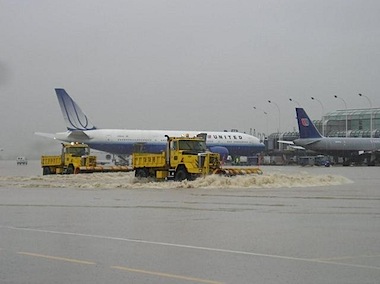
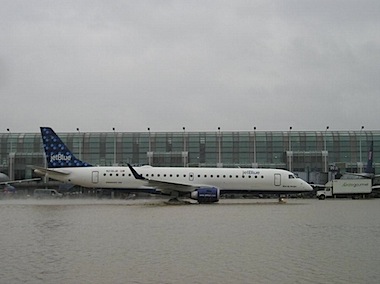
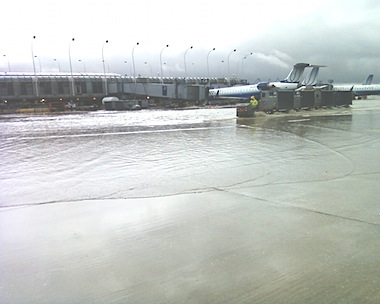
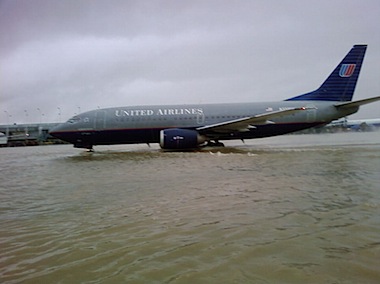






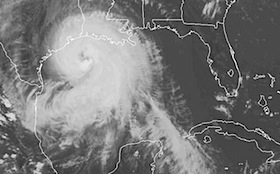
.gif)